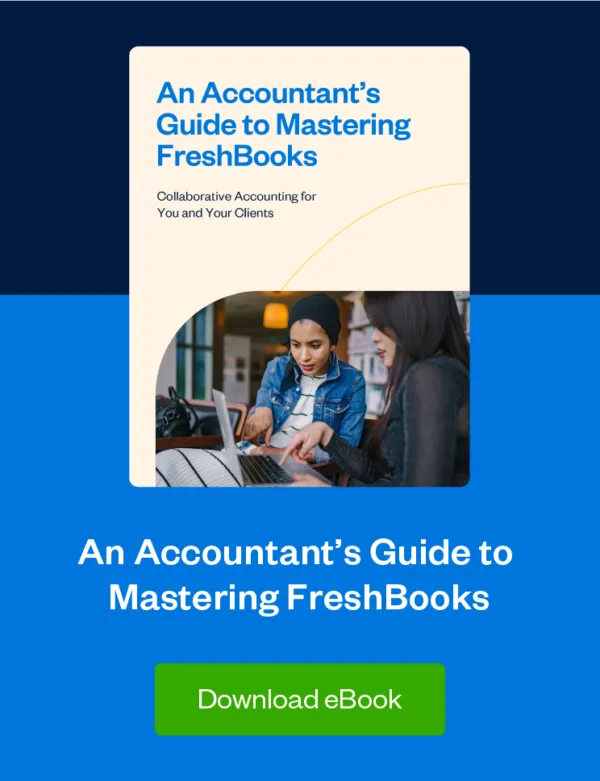Remote work is here to stay. How can you ensure your virtual practice is built for long-term success?

We don’t always associate accounting and bookkeeping with flexibility. After all, there are rules to be followed and numbers to be crunched. But if COVID-19 has taught us anything, it’s that we need to be flexible if we’re going to thrive in a turbulent business environment.
For many, remote work has become the new norm, whether that’s working from home for an employer, or as a service business owner. According to a recent PWC study, financial services firms (including accounting services) saw a major shift in work-from-home with COVID-19.
Pre-pandemic, 29% of these practices had at least 60% of employees working from home at least once per week; that number has grown to 69% of practices.
The Virtual Accounting Advantage
For an accountant or bookkeeper, running a virtual practice has some major advantages. First, you have the flexibility to work on your client’s books any time of day or night. A virtual accounting firm can also work with anyone anywhere in the country, which is a powerful advantage if you want to niche down to a specific sub-industry.
If your firm is bigger than just you, a virtual practice also gives you flexibility with your team. You can incorporate employees and contractors from anywhere in the world and fold them seamlessly into your practice.
Of course, these advantages also come with some challenges. When you’re trying to reach prospects nationally instead of locally, marketing becomes more complex. Flexible hours can be a blessing and a curse. You need to find a balance and set boundaries between work and home life.
Working with virtual employees is also a new challenge for many accounting and bookkeeping professionals. But don’t worry, you can overcome these challenges and thrive in a virtual practice.
At Blueprint Accounting, we’ve been virtual since we started. Here are a few key tips to help you along the way in your virtual journey.
How to Set up Your Virtual Accounting Firm
To succeed in a virtual bookkeeping or accounting practice, you need to embrace the online model. This includes investing in a few basic tech tools that allow you to interact with your clients, colleagues, and employees online, and deliver bookkeeping and accounting services virtually.
In short, this means being in “the cloud.”
SaaS (software as a service) apps make it simple to work from any location by logging into shared cloud-based software. These tools offer everything from an actual accounting platform like FreshBooks to communications and project management like Slack or Karbon. Many can also be integrated to work together, creating even more automation that saves you time and money.
Because these programs are hosted in the cloud rather than installed on your computers, they’re not only easier to work with and share remotely, they’re also easier to access with a laptop, mobile device, or other gadgets that may not have the speed or storage space of a typical office desktop.
Next, let’s take a look at a few of the best tools for virtual accounting and bookkeeping services, which have worked well for our all-virtual firm.
Click here for a free Webinar: How to Stay Compliant While Growing Your Remote Team
How to Work With Clients Virtually
Communication is absolutely crucial to a successful online practice. You need to keep your clients who are business owners up-to-date on the state of their business, and you need them to provide you with details in a timely manner. It can be tempting to load up on tons of shiny apps, but it will serve your firm and your clients best to focus on just a few that get the job done.
“It can be tempting to load up on tons of shiny apps, but it will serve your firm and your clients best to focus on just a few that get the job done.”
Get the Right Tools for Virtual Client Communication
We’ve actually come to rely on the simplicity of email and phone calls. This allows clients to reach us without the need to learn any new technology. When it comes to scheduled meetings, anyone can set up a video call (we use Microsoft Teams, but Zoom works too) and easily join from a computer or smartphone.
Shareable online calendars reduce the back-and-forth of scheduling meetings. Because we’re a Microsoft-based firm, we use Microsoft Bookings, but another easy cloud-based solution is Calendly. Including the scheduling link in your email signature makes it even easier for people to book time to talk.
You can also reduce the need for meetings altogether by providing information in a more asynchronous way. Loom is a video messaging tool that has been a game-changer for our firm. It allows us to record video walkthroughs showing our faces and a screen share as we go through something like a financial report.
Just email the video link, and the client can view and review it at their convenience. Even if a one-on-one session is still required, the bulk of questions will have been answered in the video, making the meeting more efficient.
Virtual accounting is, by definition, paperless. While both you and the client may choose to keep hard copies, you need a way to share them online. Using a secure file-sharing portal like Liscio makes it easy to gather the documents you need. And a workflow app like Pixie, developed specifically for small accounting firms, can tie everything together and keep you organized.
How to Work With Your Team Remotely
For most virtual businesses, it’s not only the customers who are in a different location but also the employees. You may all be working from home or may have a central office with colleagues working from different locations some or all of the time.
To keep everything running smoothly, you’ll need to create an effective system for workflow and maintaining company culture.
Establish Communication Guidelines
One of the first things you’ll need is a set of communication guidelines for everyone in the firm to follow. What should be handled via email versus Slack or a text message? Under what circumstances should someone pick up the phone and call you? What should be handled asynchronously versus synchronously, especially if people are working in multiple time zones? Create a guideline document and make sure everyone reads and understands it.
Set standard all-hands meetings for regular updates and check-ins. Depending on the size of your team and the number of projects (and whether or not it’s tax season) you can adjust the length and frequency of these meetings.
Our firm has weekly update meetings on Mondays and we take turns presenting biweekly lunch-and-learns. You may just need one weekly meeting or multiple stand-ups throughout the week.
Provide Tools and Support for Your Team
A few simple tech tools help colleagues communicate without confusion or overwhelm. Slack is great for internal communication, and Karbon is a powerful tool for managing projects and having a central location to track work progress.
When it comes to partners, colleagues, and employees, it’s important to think about more than just workflows and software. A successful work-from-home team balances work and home life, and establishes healthy boundaries. Try to focus more on the outcomes and getting the work completed than on activity and clocking a set number of hours per day during a fixed window. Things will come up, and anxiety will be greatly reduced if you can be flexible.
“It’s important to think about more than just workflows and software. A successful work-from-home team balances work and home life, and establishes healthy boundaries.”
Make sure you take the time to build a sustainable culture in your firm that supports people on a personal level. You want to reinforce rather than punish them for turning off when work is done and enjoying life outside of the “office.” It can be difficult to draw that line when working from home, and it’s important to provide encouragement and support.
How to Market Yourself Online
Unsure how to market your virtual accounting or bookkeeping firm? Although there may be a learning curve, virtual marketing actually has many advantages.
Start With Social Media
Social media is a great place to start. And since your potential customers are no longer limited to your local area, you can focus on marketing to the types of business owners you most want to serve.
Start by finding the best “fishing holes,” be it Facebook, LinkedIn, Twitter, or Instagram (you can even throw TikTok in the mix). Make sure you’re posting there on a regular basis, both with original content, and reposting interesting articles and news. Then search for groups and communities popular with your target market and get involved.
Be patient. It can take several months to gain traction and get more views on your social media content. The key is to post valuable information, post on a regular schedule, and make sure your personality shines through in your online interactions. People like to work with people, not marketing robots.
Set up Local Business Profiles
Yes, you’re virtual now, but building out your profile in Google My Business, Facebook business page, and local directories is still one of the top marketing tactics I recommend. Local clients will still find you this way. Plus, these profiles can serve as powerful word-of-mouth marketing.
They don’t take much ongoing effort, so make sure you get them set up right away. And be sure to set up a separate profile for each location you have.
Get Reviews
When it comes to reviews, if you don’t ask, you don’t get. Many accountants and bookkeepers lack reviews simply because they don’t ask. It’s a huge miss because reviews can be a crucial piece of social proof.
Once you start getting good results for a client, ask for a review and—this is key—make it easy for them. Make the ask in writing and include a link directly to the review page on whatever platform you’re targeting.
Email is the obvious place to make a request, but you can also ask via text, social media chat, on your website (especially download thank-you pages), or even a line on invoices.
3 Pieces of Encouragement
The pandemic won’t last forever, but nonetheless, it looks like virtual work is the way of the future. So let me leave you with three takeaways.
First, you may be overwhelmed already. We all are. There’s a lot out there to think about and you don’t need to do it all at once. Start small and work your way up. For example, do one social media post per week, then two, and so on. Eventually, you’ll be on a schedule with one every business day of the week and you’ll look back amazed at how you got there.
Second, keep your eyes open. There are some amazing opportunities for firms that are able to stay up-to-date on virtual-work best practices. Working virtually is new to a lot of businesses, so if you’re open to the change that’s happening, and your clients notice it, then they’ll come to you for help with that change, too.
Finally, if you’re a sole proprietor or a small bookkeeping or accounting firm, don’t be intimidated. Small = nimble and you’re actually at an advantage. You have the flexibility to adopt new habits quickly, and you have a leg up when it comes to understanding and relating to the challenges of small business owners during this unprecedented time.
Webinar: How to Stay Compliant While Growing Your Remote Team

Written by Brian Clare, CPA, Partner and CEO, Blueprint Accounting, Inc.
Posted on May 3, 2021

 How to Develop an Accounting Niche That Reflects Your Values
How to Develop an Accounting Niche That Reflects Your Values 5 Marketing Strategies Accountants Should Know
5 Marketing Strategies Accountants Should Know Accountants: How to Determine the Best KPIs for Your Clients
Accountants: How to Determine the Best KPIs for Your Clients





